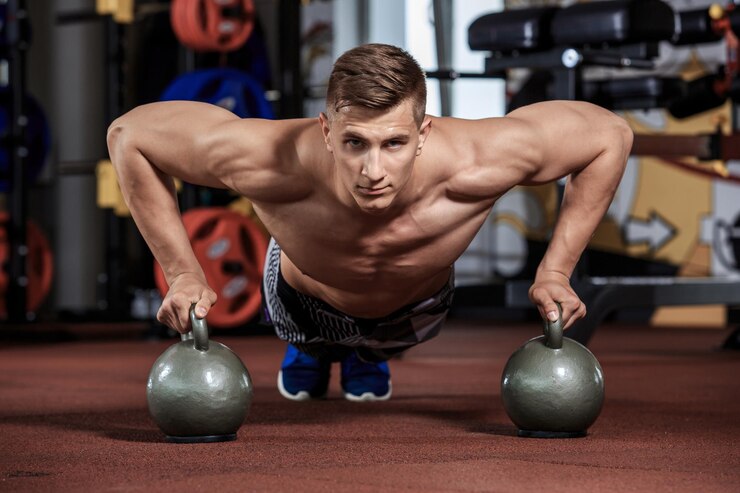
If you’re looking to build muscle, you’ve probably wondered what the most effective training split is. Well, look no further! In this article, we’ll explore various training splits and help you determine which one is best for your muscle-building goals. Whether you’re a beginner or an experienced lifter, we’ve got you covered. So grab your workout gear, because it’s time to find out the optimal way to pack on that muscle mass!

This image is property of pixabay.com.
Importance of Training Split
Choosing the right training split is crucial for maximizing muscle growth, avoiding overtraining and injury, and achieving your fitness goals. By dividing your workouts strategically, you can ensure that you are effectively targeting all muscle groups, balancing workload and recovery, and continually challenging your body for progress. Different training splits offer various benefits and suit different levels of fitness, so let’s explore the most common ones to help you decide which approach is best for you.
Full Body Training
Full body training involves working all major muscle groups in a single session. This type of training is great for beginners or individuals with limited time for workouts. By training the entire body in one session, you can ensure that all muscle groups are stimulated and have sufficient recovery time between workouts.
When implementing full body training, frequency and volume considerations are important. Since you are working all muscle groups in one session, it’s important to allow enough rest between sessions to ensure adequate recovery. Typically, two to three full body workouts per week are recommended for optimal results. Additionally, keeping the volume per session moderate can prevent excessive fatigue and overtraining.
Upper/Lower Split
The upper/lower split divides workouts into upper body and lower body sessions. This split allows for a more targeted focus on specific muscle groups while still providing enough time for recovery. It is often considered an ideal training split for intermediate lifters who have some experience with resistance training.
When following an upper/lower split, it’s essential to balance workload and recovery. This means alternating between upper body and lower body workouts, allowing each muscle group to recover adequately. By distributing the workload throughout the week, you can maintain a higher training frequency for each muscle group while still allowing enough recovery time.
Push/Pull/Legs Split
The push/pull/legs split categorizes exercises based on movement patterns. Push exercises focus on muscles involved in pushing movements, such as chest, shoulders, and triceps. Pull exercises target muscles used in pulling movements, such as back and biceps. Legs exercises primarily work the lower body muscles.
One of the main advantages of the push/pull/legs split is balancing muscle groups and reducing imbalances. By categorizing exercises based on movement patterns, you can ensure that opposing muscle groups are trained evenly. This approach helps to prevent muscle imbalances, which can lead to poor posture and increased risk of injury.
Training frequency and variations can be adjusted based on individual preferences and goals. Some people choose to follow a three-day split, where each day focuses on either push, pull, or legs, with a rest day in between. Others may opt for a four or five-day split, incorporating additional workout variations and additional rest days.
This image is property of pixabay.com.
Body Part Split
The body part split involves targeting specific muscle groups each day. This split is often favored by advanced lifters who have been training for an extended period and want to maximize their muscle development. By dedicating an entire workout session to one muscle group, you can achieve a higher volume and intensity for that specific muscle.
When following a body part split, it’s crucial to ensure that each muscle group has enough time to recover. Higher volume and intensity on each muscle group require more rest between sessions. Therefore, this split typically involves training each muscle group only once per week. Additionally, incorporating adequate rest days and active recovery exercises between sessions is essential for optimizing recovery and avoiding overtraining.
Push/Pull/Legs + Upper/Lower Hybrid
For those who want to combine the benefits of both the push/pull/legs and upper/lower splits, the push/pull/legs + upper/lower hybrid split may be an excellent option. This split allows for a more varied training approach, targeting all muscle groups while still providing sufficient recovery time.
The push/pull/legs + upper/lower hybrid split involves alternating between push/pull/legs workouts and upper/lower workouts throughout the week. This split ensures that all muscle groups are adequately trained and allows for a higher training frequency without compromising recovery. This approach is often suitable for intermediate to advanced lifters who want to challenge themselves and progress further.
This image is property of pixabay.com.
Frequency Considerations
Training frequency is an essential factor to consider when designing your training split. The frequency at which you train each muscle group depends on various factors, including your training experience, lifestyle, and recovery capacity. While beginners may benefit from full body or upper/lower splits two to three times a week, advanced lifters may follow a body part split with each muscle group trained once a week.
It’s crucial to understand the importance of recovery and adaptation in muscle growth. When you subject your muscles to intense training stimuli, they require sufficient time to repair and grow stronger. By allowing adequate recovery time between sessions, you can optimize muscle growth and minimize the risk of overtraining or injury.
It’s also essential to accommodate individual differences when determining the training frequency. Some individuals may recover faster than others or have different genetic traits that influence their recovery capacity. Therefore, it’s essential to listen to your body, monitor your progress, and make adjustments accordingly.
Volume and Intensity Manipulation
Balancing training volume and intensity is a vital aspect of any training split. Volume refers to the total amount of work performed during a workout, including the number of sets and repetitions. Intensity, on the other hand, refers to the level of effort or resistance used during the exercises.
Progressive overload is a key principle for muscle growth. By gradually increasing the training volume and intensity over time, you can challenge your muscles and promote growth. However, it’s crucial to individualize these variables based on your fitness level, recovery capacity, and training goals. Striking the right balance between volume and intensity can help you avoid plateaus, prevent overtraining, and continue making progress.

This image is property of images.pexels.com.
Periodization Strategies
Periodization is a training approach that involves systematically varying training variables over time to optimize muscle growth and performance. Different periodization strategies, such as linear periodization, undulating periodization, or block periodization, can be implemented to continually challenge your muscles and promote progress.
Linear periodization involves gradually increasing the training volume and intensity over several weeks or months, aiming to peak at a specific time. Undulating periodization, also known as daily undulating periodization, varies the training volume and intensity within weekly or bi-weekly cycles. Block periodization divides training into distinct blocks, each with a specific focus and training emphasis.
By implementing periodization strategies, you can optimize muscle growth, prevent stagnation, and continue making progress in the long term. However, it’s important to seek guidance from a qualified fitness professional when implementing periodization, as it can be complex and tailored to individual needs.
Other Factors to Consider
While selecting an appropriate training split is important, there are other factors to consider as well. Individual preferences and adherence play a significant role in long-term success. Find a training split that you enjoy and can stick to consistently, as consistency is key to achieving your fitness goals.
Lifestyle and time constraints should also be taken into account. Assess how many days per week you can commit to training and consider the duration of your workouts. Some training splits may require more time or flexibility, so choose one that can be realistically incorporated into your schedule.
Lastly, consider the overall training program design. Your training split is just one component, and it should align with your goals, whether they are muscle growth, strength, endurance, or a combination of these. Ensure that your training program includes a balanced mix of resistance training, cardiovascular exercise, flexibility work, and adequate rest and recovery.
In conclusion, the best training split for building muscle depends on your goals, experience level, recovery capacity, and individual preferences. Whether you choose full body training, upper/lower split, push/pull/legs split, body part split, or a hybrid approach, the key is finding a split that allows for optimal muscle stimulation, recovery, and progression. Consider your unique needs and consult with a qualified fitness professional to design a training split that suits you best. Remember, consistency and dedication are key to achieving your desired results.


